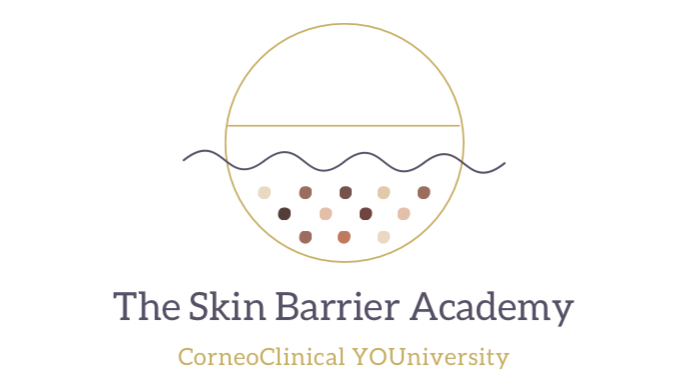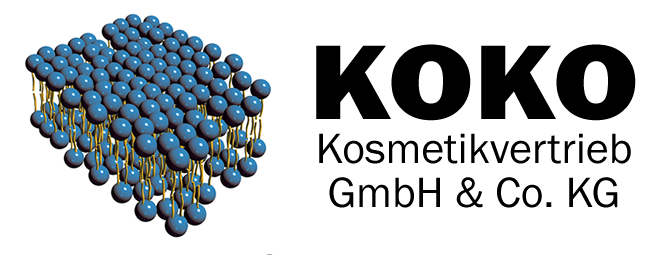cosmetic skin-types
We have to ask ourselves; are cosmetic skin types a combination of myths or chaos? New insights lead to better understanding.
 Skincare products usually are marketed according to our skin types. In all the regular retail markets, where we usually obtain cosmetic products, they are typically grouped into three categories: dry, normal and oily [1, 2]. But the self-assessment of us as consumers of what to purchase is often flawed. Additionally, there is confusion by terms such as “dry” and “moisture deficient skin” (dehydrated) to widen the aspects of dry skin [3].
Skincare products usually are marketed according to our skin types. In all the regular retail markets, where we usually obtain cosmetic products, they are typically grouped into three categories: dry, normal and oily [1, 2]. But the self-assessment of us as consumers of what to purchase is often flawed. Additionally, there is confusion by terms such as “dry” and “moisture deficient skin” (dehydrated) to widen the aspects of dry skin [3].
Eventually, we are incorrectly buying products for sensitive or combination skin. Here I want to take a closer look at the myth of skin types, which new insights are published and what this all can mean for skincare.
Skin-type and the oiliness of the skin
If we talk about skin types, we usually are referring to the cosmetic skin types [4] in contrast to professionally diagnosed skin types. For the purposes of this article, I will not be referring to skin types like “lipid dry“ and “permanent diffused redness“, as this is a topic for another time.
There are other skin types, which must be to be differentiated. The most important one is the Fitzpatrick (or phototype) skin type, which is used to classify the skin’s sensitivity (burn time) toward UV (solar) radiation [5].
Cosmetic skin types are dry, normal and oily, and are classified based on the sebum content on the skin. In dermatology, this is referred to as casual sebum level. Sebum is generated in the sebocytes which are located near the hair shaft in the pilosebaceous unit. From there sebum flows to the skin and spreads on the surface.
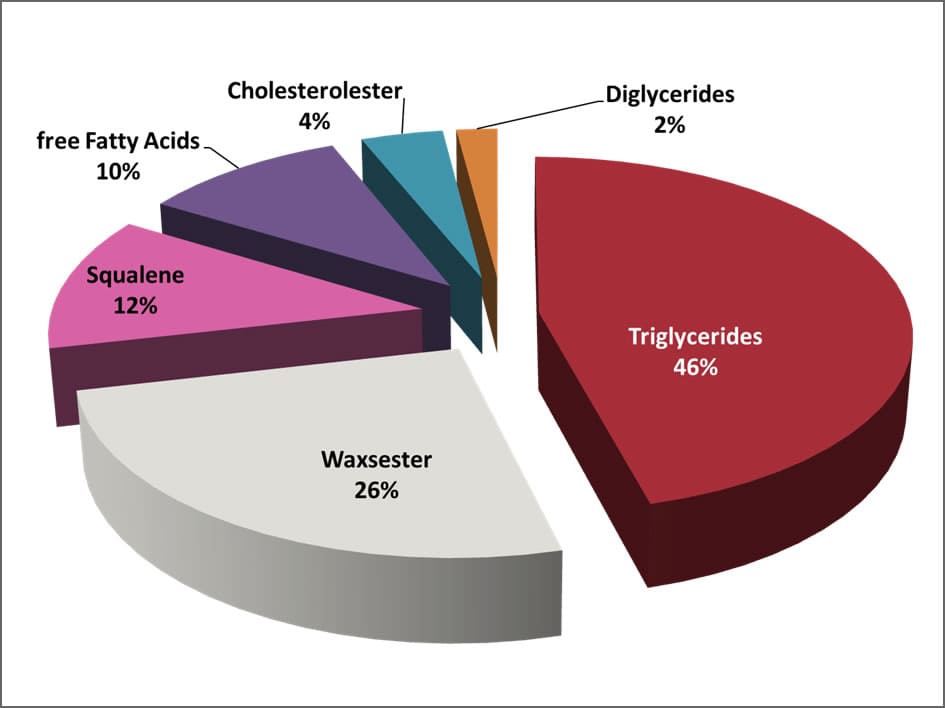 Figure 1: Composition of sebum [6] shows, that the main ingredients are triglycerides and wax esters. All numbers are average, sebum composition underlies substantial individual variations.
Figure 1: Composition of sebum [6] shows, that the main ingredients are triglycerides and wax esters. All numbers are average, sebum composition underlies substantial individual variations.
The lipids on the skin surface are by all means not only sebum. Also epidermal lipids, the barrier lipids are found there.
They are composed of ceramides, long-chain free fatty acids and cholesterol [7]. Skin surface lipids therefore are a mixture of sebum and epidermal lipids [8].
How they interact with each other I cover later in this text.
Measurement of skin-type versus subjective perception
As with sebumetry [9] sebum levels can be reliably assessed, but we as users have a general problem with the subjective assessment of our skin types. Additionally, sebum levels are not constant.
Generally, they are higher in males than in females. They change with age, with the season (highest in summer), can be influenced by nutrition and vary even within one area – the face. 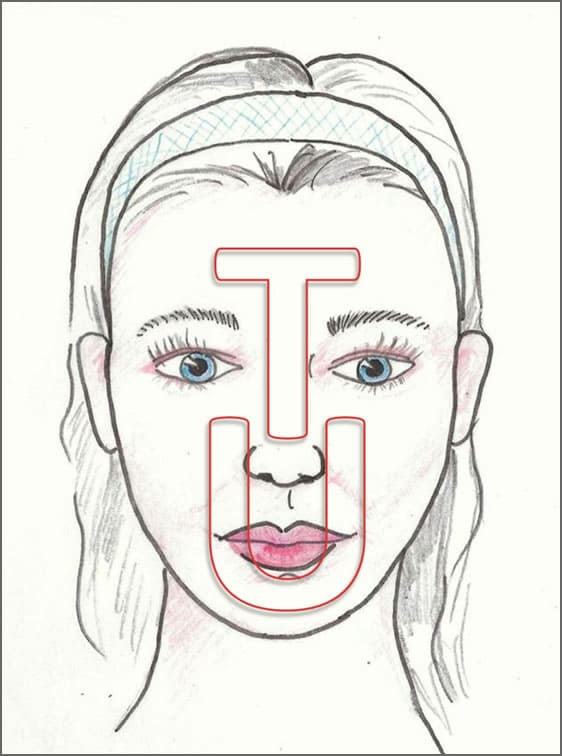
In the past, there has been a considerable amount of documentation [10-13]. It has been tried to correlate different biophysical parameters of skin with facial areas and subjective skin types [14]. Youn et al. investigated a Korean collective and realized: that the forehead and nose are more oily than the chin and cheek, regardless of skin type.
Therefore they also define a U-zone, additional to the well established T-zone [15].
Figure 2: Investigations of Youn [15] clearly show that T-zone: forehead and nose are more oily than U-zone: cheek and chin. That applies to all subjectively assessed skin types.
Even though this is not sufficient to describe what is found in practical experience, skin types are broadened for combination skin [16]. Combination skin also is an established skin type, which unfortunately does not help the consumer to choose the right product.
Baumann skin-type classification and sensitive skin
For many skin-type classifications, sebum content alone is not regarded as sufficient. Therefore other methods have been established. One of the more descriptive methods is the classification developed by dermatology professor Dr. Leslie Baumann.

She differentiates between skin oiliness, skin discolouration (pigmented moles), wrinkle-prone skin and sensitivity. In total, this accounts for 16 skin types (figure 3). Additionally, she devotes a lot of consideration to sensitive skin. Sensitive skin cannot be detected via established biophysical methods [18].
Even though there are indications that TEWL (transepidermal water loss) is enhanced or increased sensitivity towards certain trigger molecules (i.e. Capsaicin) exist [19]. Nevertheless, this skin type is difficult to assess.
Dr Baumann, therefore, dedicates a lot of attention to the questionnaire on subjective perception [20] and eventually classifies skin diseases like acne or rosacea as sensitive skin [21]. This sounds logical, as according to her definition, the opposite of sensitivity is resistance.
Skin-type and skin moisturization
Looking at the skin-type classifications it is obvious that the biophysical parameter of skin moisturization is not assessed. Although different zones of the facial skin have different moisturization levels, moisturization and sebum levels do not correlate [14]. On the contrary, there is growing evidence that skin moisturization – this is what most skincare products do – might not be beneficial.
Skin-type and reality
In contrast to ethnic skin types [22] and Fitzpatrick skin types, cosmetic skin types are not fixated. They can vary according to intrinsic or extrinsic factors. Additionally, the role which sebum plays on skin has been underestimated for a long time. Just now there are indications emerging on the many effects of sebum.
It is orchestrating how the epidermal lipids (also known as barrier lipids) are formed [23]. Furthermore, sebum also acts in a positive way on the barrier function of the skin in an immunological sense [24].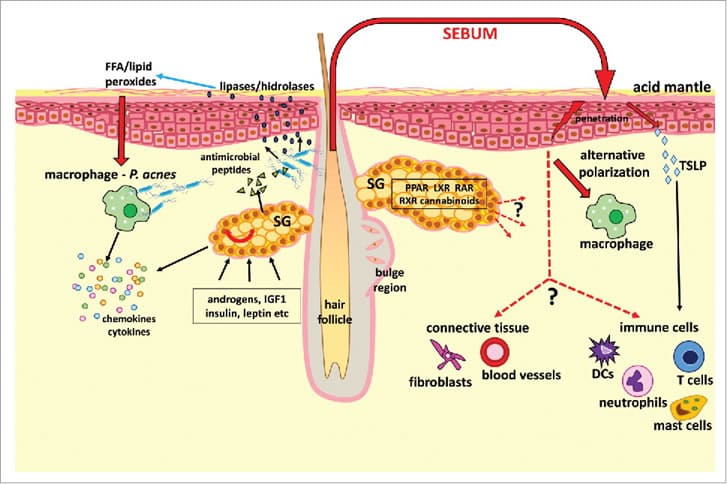
Figure 4: Multiple interactions of sebum with skin barrier functions [24]. Sebum not only forms a lipid layer on the skin, it’s degradation products also react with immunocompetent cells and form a favourable milieu for a healthy skin microbiome.
If the skin is colonized with Demodex Folliculorum (a mite) more sebum is secreted and skin pH is slightly elevated [25]. These putative changes can already be sufficient to influence the bacterial composition of the skin (microbiome). How and how strongly, that we do not know today. But the intentional supply of moisture and oil can make changes in the microbiome composition [26, 27]. There are changes when skin moisture is elevated on a usually oily area like the forehead or oiliness is elevated on an originally dry area like the cheek [26]. But also elevating moisturization levels on the cheek lead to changes [27]. Taken together these can be indications of how acne can be triggered.
Figure 5: Possible formation pathway of sensitive skin. Sensitive skin could originate either from oily or dry skin.
As acne is a multifactorial skin disorder, that often is correlated with increased sebum secretion. But investigation results in this respect are conflicting. Acne itself is an infectious disease that is triggered only by some members of the big family of Propionibacterium Acnes [28, 29].
Ways to leave the skin-type chaos
It is said that Helena Rubinstein "invented" the skin types at the beginning of 1900. And hence it looks like the cosmetic skin types are rather a marketing tool [30]. Therefore it is not surprising that subjective skin types and biophysical measurements do not correlate. Sensitive skin ideally can be assessed using a questionnaire. Sensitive skin can also be a result of wrong treatment, especially cleansing [31].
When choosing our skincare products we should pay attention, especially with acne or rosacea skin, not to use products with strong moisturizing action. Also, internet-based guidebooks can be misleading or wrong. Using skin cleansing products we should be careful not to choose such with strong sebum reducing action. Because sebum and all skin surface lipids are an integral component of the skin barrier[(32]. A good skincare product respects and supports it. Producers like Johnson & Johnson already know this and inform on their internet sites [33].
I do not think that we will still talk about cosmetic skin types within the course of the next ten years. The trend is moving towards the individualization of skincare [34]. And DNA tests are discussed to optimize this [35].
References
(1) https://www.haut.de/haut/gesichtshaut/hauttypen/
(2) https://www.dr-loentz.de/hautarzt-bad-schwartau-hauttypen-und-ihre-pflege.html
(3) https://www.codecheck.info/news/Hast-Du-feuchtigkeitsarme-oder-trockene-Haut-162227
(4) https://www.pinkmelon.de/magazin/geheimnis-kosmetik/welchen-hauttyp-habe-ich.html
(5) https://de.wikipedia.org/wiki/Hauttyp
(6) Picardo M, Ottaviani M, Camera E, Mastrofrancesco A. Sebaceous gland lipids. Dermatoendocrinol. 2009;1(2):68-71. www.ncbi.nlm.nih.gov/pmc/articles/PMC2835893/
(7) https://www.pinkmelon.de/magazin/geheimnis-kosmetik/helfen-ceramide-wirklich.html
(8) Pappas, A., Epidermal surface lipids. Dermatoendocrinol. 2009;1(2):72-6. https://www.ncbi.nlm.nih.gov/pmc/articles/PMC2835894/
(9) http://www.bioline.org.br/pdf?dv05148
(10) Lopez, S. , Le Fur, I. , Morizot, F. , Heuvin, G. , Guinot, C. and Tschachler, E. (2000), Transepidermal water loss, temperature and sebum levels on women's facial skin follow characteristic patterns. Skin Research and Technology, 6: 31-36. doi:10.1034/j.1600-0846.2000.006001031.x
(11) Firooz A, Sadr B, Babakoohi S, et al. Variation of biophysical parameters of the skin with age, gender, and body region. ScientificWorldJournal. 2012;2012:386936. https://www.ncbi.nlm.nih.gov/pmc/articles/PMC3317612/
(12) Pappas A, Fantasia J, Chen T. Age and ethnic variations in sebaceous lipids. Dermatoendocrinol. 2013;5(2):319-24. https://www.ncbi.nlm.nih.gov/pmc/articles/PMC3772921/
(13) Wa, C. V. and Maibach, H. I. (2010), Mapping the human face: biophysical properties. Skin Research and Technology, 16: 38-54. doi:10.1111/j.1600-0846.2009.00400.x
(14) Fur, I. L., Lopez, S. , Morizot, F. , Guinot, C. and Tschachler, E. (1999), Comparison of cheek and forehead regions by bioengineering methods in women with different self‐reported “cosmetic skin types”. Skin Research and Technology, 5: 182-188. doi:10.1111/j.1600-0846.1999.tb00129.x
(15) Youn, S. W., Kim, S. J., Hwang, I. A. and Park, K. C. (2002), Evaluation of facial skin type by sebum secretion: Discrepancies between subjective descriptions and sebum secretion. Skin Research and Technology, 8: 168-172. doi:10.1034/j.1600-0846.2002.10320.x
(16) Youn, S. W., Na, J. I., Choi, S. Y., Huh, C. H. and Park, K. C. (2005), Regional and seasonal variations in facial sebum secretions: a proposal for the definition of combination skin type. Skin Research and Technology, 11: 189-195. doi:10.1111/j.1600-0846.2005.00119.x
(17) https://en.wikipedia.org/wiki/Baumann_Skin_Types
(18) ) https://www.pinkmelon.de/magazin/geheimnis-kosmetik/sensible-haut-hilft-hypoallergen.html
(19) Misery, L. , Loser, K. and Ständer, S. (2016), Sensitive skin. J Eur Acad Dermatol Venereol, 30: 2-8. doi:10.1111/jdv.13532
(20) Baumann, Leslie. (2014). Baumann Skin Type Indicator- A novel Approach To Understanding Skin Type. 29-39. https://www.researchgate.net/publication/288331555_Baumann_Skin_Type_Indicator-_A_novel_Approach_To_Understanding_Skin_Type
(21) Baumann, L., Understanding and Treating Various Skin Types: The Baumann Skin Type Indicator, Dermatologic Clinics, 26:3, 359-373 (2008) https://doi.org/10.1016/j.det.2008.03.007 http://www.beauty-review.nl/wp-content/uploads/2014/04/Understanding-and-treating-various-skin-types-the-Baumann-Skin-Type-Indicator..pdf
(22) Rawlings, A. V. (2006), Ethnic skin types: are there differences in skin structure and function?1. International Journal of Cosmetic Science, 28: 79-93. doi:10.1111/j.1467-2494.2006.00302.x
(23) Ludovici, Matteo, Kozul, Nina, Materazzi, Stefano, Risoluti, Roberta, Picardo, Mauro, Camera, Emanuela, ( 2018), Influence of the sebaceous gland density on the stratum corneum lipidome, Scientific Reports 8: 11500, 1, https://doi.org/10.1038/s41598-018-29742-7
(24) Lovászi, Marianna, Szegedi, Andrea, Zouboulis, Christos C.,Törőcsik, Dániel, (2017) Sebaceous-immunobiology is orchestrated by sebum lipids, Dermato-Endocrinology, 9:1 e1375636 https://doi.org/10.1080/19381980.2017.1375636
(25) Ts. Sarangua, A. Gurbadam, Ya. Enkhtur, (2013), Correlation Demodex Folliculorum and Skin Biophysical Parameters, Journal of Cosmetics, Dermatological Sciences and Applications, Vol.3 No.3, https://file.scirp.org/pdf/JCDSA_2013092511513193.pdf
(26) Mukherjee, Souvik, Mitra, Rupak, Maitra, Arindam, Gupta, Satyaranjan, Kumaran, Srikala, Chakrabortty, Amit, Majumder, Partha P., (2016) Sebum and Hydration Levels in Specific Regions of Human Face Significantly Predict the Nature and Diversity of Facial Skin Microbiome, Scientific Reports, 6:36032 https://doi.org/10.1038/srep36062
(27) Lee HJ, Jeong SE, Lee S, Kim S, Han H, Jeon CO. Effects of cosmetics on the skin microbiome of facial cheeks with different hydration levels. Microbiologyopen. 2017;7(2):e00557. https://www.ncbi.nlm.nih.gov/pmc/articles/PMC5911989/
(28) Tomida S, Nguyen L, Chiu B, Liu J, Sodergren E, Weinstock GM, Li H. Pan-genome and comparative genome analyses of Propionibacterium acnes reveal its genomic diversity in the healthy and diseased human skin microbiome. mBio (2013) 4(3):e00003-13. oi:10.1128/mBio.00003-13 .
(29) Fitz-Gibbon S, Tomida S, Chiu BH, Nguyen L, Du C, Liu M, Elashoff D, Erfe MC, Loncaric A, Kim J, Modlin RL, Miller JF, Sodergren E, Craft N, Weinstock GM, Li H, Propionibacterium acnes Strain Populations in the Human Skin Microbiome Associated with Acne, Journal of Investigative Dermatology (2013), 133 (9): 2152-2160.https://doi.org/10.1038/jid.2013.21.
(30) Katerina Steventon, Consumer Perspective—Skin Types and Sensory Experience, (2013), Cosmetics& Toiletries, https://www.cosmeticsandtoiletries.com/research/biology/199897981.html
(31) Walters RM, Mao G, Gunn ET, Hornby S. Cleansing formulations that respect skin barrier integrity. Dermatol Res Pract. 2012;2012:495917. https://www.ncbi.nlm.nih.gov/pmc/articles/PMC3425021/
(32) Tao, R & Niu, Y.-Q & Guo, J.-M & Zhong, S.-M & Wu, Y. (2015). The relationship between subjective skin type and skin barrier function. Journal of Clinical Dermatology. 44. 3-6. https://www.researchgate.net/publication/282273222_The_relationship_between_subjective_skin_type_and_skin_barrier_function
(33) https://www.jnj.com/innovation/how-the-microbiome-could-transform-your-skin-in-surprising-ways
(34) https://klardenker.kpmg.de/neuer-markt-in-sicht-alle-wollen-jetzt-personalisierte-produkte-kaufen/
(35) https://www.donna-magazin.de/personalisierte-hautpflege-kosmetik-nach-mass
Picture credits
Figure 3: Wikipedia Graphic Designer https://commons.wikimedia.org/wiki/File:BingoCard.png
Figure 4: Lovaszi et al. https://doi.org/10.1080/19381980.2017.1375636
All other figures and images are my own work and can be used under der creative commons license CC BY-SA 3.0

